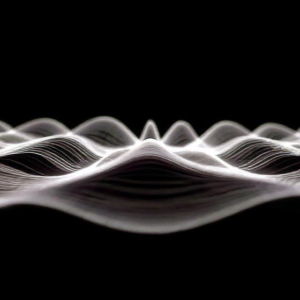Interference in Thin Films
What is interference in thin films?
Interference in thin films is a phenomenon that happens when light reflects off the top and bottom surfaces of a very thin layer of material (like soap bubbles, oil slicks, or glass) and creates a pattern of bright and dark bands or colors. This occurs because light waves from the two reflections either reinforce each other (constructive interference) or cancel each other out (destructive interference).

How does it work?
- Thin Film: A thin layer of material (like soap film or oil on water) is usually just a few micrometers thick.
- Light Reflection: When light hits the thin film, part of it reflects off the top surface of the film, and part of it travels through the film and reflects off the bottom surface.
- Path Difference: The two reflected light waves travel different distances before they recombine. This difference in distance causes the two light waves to be out of phase (or in phase), leading to interference.
- Constructive Interference: When the two waves are in phase (their crests and troughs line up), they reinforce each other, creating bright bands (increased intensity).
- Destructive Interference: When the two waves are out of phase (their crests meet troughs), they cancel out each other, creating dark bands (reduced intensity).
- Color Patterns: The interference can also cause color patterns. The thickness of the film, the wavelength of light, and the angle of incidence determine which colors will be enhanced or diminished.
Conditions for Interference in Thin Films
- Constructive interference happens when the extra distance traveled by the light is a whole number multiple of the wavelength of light (i.e.,
, where
is an integer,
is the thickness of the film, and
is the wavelength of light).
- Destructive interference happens when the extra distance is an odd multiple of half the wavelength of light (i.e.,
).
Examples:
- Soap Bubbles: The beautiful rainbow colors you see on a soap bubble are due to interference in the thin soap film. Different wavelengths (colors) of light interfere with each other depending on the thickness of the soap film.
- Oil Slicks on Water: The colorful patterns on an oil slick are also caused by interference between light waves reflecting from the top and bottom surfaces of the thin oil layer.
Newton’s Rings
What are Newton’s Rings?
Newton’s Rings are a set of concentric circular interference patterns created when light reflects between a flat glass surface and a convex lens (a lens with a curved surface). These rings are formed due to the interference of light waves reflected from the top and bottom surfaces of the thin air layer between the lens and the glass.
How does it work?
- Setup: Imagine placing a planoconvex lens (a lens with one flat surface and one curved surface) on top of a flat glass plate.
- Light Reflection: When monochromatic light (light of one color) is shone on the system, some of the light is reflected off the top surface of the lens, and some is reflected from the bottom surface of the lens (the lens-air-glass interface).
- Path Difference: The light waves reflected from the top and bottom of the air gap between the lens and the glass plate travel different distances. The difference in these paths causes constructive and destructive interference, producing bright and dark rings.
- Interference Rings: The resulting Newton’s Rings are circular bands, alternating between light and dark, due to constructive and destructive interference of the reflected light waves.
How do you calculate the radii of the rings?
The radius of the
-th ring (where
is the ring number) can be calculated using the formula:
Where:
is the radius of the
-th ring.
is the wavelength of the light used.
is the radius of curvature of the convex lens.
is the ring number (starting from
for the first dark ring).
Applications of Newton’s Rings:
- Measuring the wavelength of light: By counting the number of rings and knowing the radius of curvature, you can calculate the wavelength of light used in the experiment.
- Measuring the thickness of thin films: Newton’s Rings can be used to measure the thickness of very thin transparent films by observing the interference patterns they create.
In Summary:
- Interference in Thin Films: When light reflects off the two surfaces of a thin film, it creates interference patterns (bright and dark bands or colors) based on the path difference between the two reflected light waves. This is seen in phenomena like soap bubbles and oil slicks.
- Newton’s Rings: Circular interference patterns created when light reflects between a curved lens and a flat surface. These rings are used in optical measurements to study properties of lenses and thin films.
Both phenomena rely on the principle of interference, where light waves combine to either enhance or diminish the intensity of light, leading to patterns that help scientists and engineers analyze and measure optical properties.











